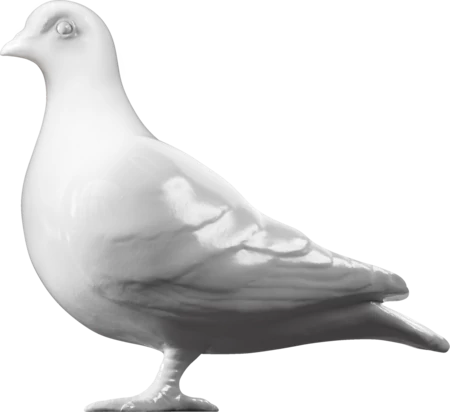Social History — C. 1900-1950
Token, market token
This ten shilling token was issued by A. Joseph Junior, a wholesale salesman at Spitalfields market. During the 19th and well into the 20th centuries market traders supplied their goods to retailers in the wholesalers' own baskets and containers. The retailers paid a deposit for each container. When they returned the container they received back the deposit. To prevent dishonest people picking up unused containers lying near the wholesaler's stall and then presenting them to the wholesaler and claiming back a deposit they had not paid, wholesalers took the precaution of giving a token as a receipt for the deposit. To claim back the deposit the retailer had to present both the token and the container. The system fell into disuse in the 1960s and by the 1970s had disappeared.
Tokens were made in a variety of metals and denominations ranging from 2 old pence to £5 according to the deposit paid. Traders often cut out small sections like on this one so they could identify their own tokens quickly. Many were like this one made by Ralph Neal of Percival Street. Its successor company, Charles Neal & Son, still makes stamped metal products like medals, dog tags and jewellery.
Spitalfields market was established in 1682 and for over 200 years it was London's most important wholesale fruit and vegetable market. The market moved out of Spitalfields in 1991 to Leyton in East London and today New Spitalfields market is the UK's leading wholesale fruit and vegetable market. Spitalfields market itself is now known for its arts, crafts and fashion stalls and shops.
- Category:
- Social History
- Object ID:
- 83.364/6
- Object name:
- token, market token
- Object type:
- Artist/Maker:
- Neal, R.
- Related people:
- Related events:
- Related places:
- Production date:
- c. 1900-1950
- Material:
brass
- Measurements/duration:
- DM 29 mm, T 1 mm (overall)
- Part of:
- —
- On display:
- —
- Record quality:
- 100%
- Part of this object:
- —
- Owner Status & Credit:
Permanent collection
- Copyright holder:
digital image © London Museum
- Image credit:
- —
- Creative commons usage:
- —
- License this image:
To license this image for commercial use, please contact the London Museum Picture Library.
